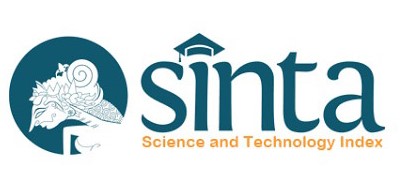Assessment of Quality of Pain and Patient Satisfaction using ASSIST Questionnaire Following Intraperitoneal Instillation of Ropivacaine Compared with the Addition of Adjuncts Ketamine versus Dexmedetomidine in Laparoscopic Cholecystectomy patients
Abstract
Background: Evaluation of patient satisfaction score and to assess quality of pain relief following intraperitoneal instillation of Ropivacaine with adjuncts Dexmedetomidine vs Ketamine using modified version of revised APS-POQ in patients undergoing laparoscopic cholecystectomy.
Methods: Sixty patients undergoing laparoscopic cholecystectomy were randomised into three groups of 20 each and received Ropivacaine 0.2 % (group R), Ropivacaine 0.2 % with Dexmedetomidine 0.7µg/ kg (group RD) and Ropivacaine with Ketamine 0.5 mg/kg (group RK) in a total volume of 40 ml. Pain severity, subjective pain complaints, pain interference in physical activity, and patient's and caregiver's satisfaction were evaluated using a modified version of the revised APS-POQ at 24 hours postoperatively.
Result: Mean pain scores for worst pain were observed to be least in Group RD, with mean values being 1.75±1.743, followed by 5.45±1.701 in Group R and mean value of 5.60±0.754 in Group RK. Mean patient satisfaction scores were found to be highest in Group RD (94.00±8.826), followed by Group R (80.00±15.218), and least in Group RK (78.50±12.258). This difference was observed to be statistically significant (p<0.05) in all groups. Primary care physicians caring for the RD group had higher satisfaction scores (9.40±0.883) compared to Group RK (7.85±1.226) and Group R (8.05±1.468)
Conclusion: Quality of pain relief improved the best with Dexmedetomidine followed by Ketamine and least when Ropivacaine used alone for intraperitoneal instillation. The overall patients' satisfaction was found to be more with Ropivacaine with Dexmedetomidine when compared to Ropivacaine alone or with Ketamine
Keywords
Full Text:
PDFReferences
Small C, Laycock H. Acute postoperative pain management. Br J Surg. 2020;107(2):e70-e80. doi:10.1002/bjs.11477
El-Labban GM, Hokkam EN, El-Labban MA, Morsy K, Saadl S, Heissam KS. Intraincisional vs. intraperitoneal infiltration of local anesthetic for controlling early post-laparoscopic cholecystectomy pain. J Minim Access Surg. 2011;7(3):173-177. doi:10.4103/0972-9941.83508.
Das NT, Deshpande C. Effects of Intraperitoneal Local Anaesthetics Bupivacaine and Ropivacaine versus Placebo on Postoperative Pain after Laparoscopic Cholecystectomy: A Randomised Double Blind Study. J Clin Diagn Res. 2017;11(7):UC08-UC12. doi:10.7860/JCDR/2017/26162.10188
Baamer RM, Iqbal A, Lobo DN, Knaggs RD, Levy NA, Toh LS. Utility of unidimensional and functional pain assessment tools in adult postoperative patients: a systematic review. Br J Anaesth. 2022;128(5):874-888. doi:10.1016/j.bja.2021.11.032.
Köse Tamer, L, Sucu Dağ G. The Assessment of Pain and the Quality of Postoperative Pain Management in Surgical Patients. SAGE Open. 2020;10(2).
Kasahun HG, Agizew TB, Temesgen MM, Ashagrie HE. Assessment of acute postoperative pain management and associated factors after elective surgery among adult surgical patients: a prospective cross-sectional study. IJS Short Reports. 2022;7(1):e37
Hamid M, Gangwani A, Akhtar M. A quality improvement survey to assess pain management in cardiac surgery patients. Open Journal of Anesthesiology. 2015;05(05):105-112. doi:10.4236/ojanes.2015.55020
Gordon DB, Polomano RC, Pellino TA, et al. Revised American Pain Society Patient Outcome Questionnaire (APS-POQ-R) for quality improvement of pain management in hospitalized adults: preliminary psychometric evaluation. J Pain. 2010;11(11):1172-1186. doi:10.1016/j.jpain.2010.02.012
Gurusamy KS, Nagendran M, Guerrini GP, Toon CD, Zinnuroglu M, Davidson BR. Intraperitoneal local anaesthetic instillation versus no intraperitoneal local anaesthetic instillation for laparoscopic cholecystectomy. Cochrane Database Syst Rev. 2014;(3):CD007337. doi:10.1002/14651858.CD007337.pub3
Yong L, Guang B. Intraperitoneal ropivacaine instillation versus no intraperitoneal ropivacaine instillation for laparoscopic cholecystectomy: A systematic review and meta-analysis. Int J Surg. 2017;44:229-243. doi:10.1016/j.ijsu.2017.06.043
Subramanian B, Shastri N, Aziz L, et al. ASSIST - Patient satisfaction survey in postoperative pain management from Indian subcontinent. J Anaesthesiol Clin Pharmacol. 2017;33(1):40-47. doi:10.4103/joacp.JOACP_245_16
Kapoor R., Dua S., Saxena A. K., & Narayan S. (2023). Evaluation of the Efficacy of Intraperitoneal Instillation of Ropivacaine with Dexmedetomidine Versus Ropivacaine with Ketamine for Post Operative Pain Relief following Laparoscopic Cholecystectomy: A Randomized Controlled Study. Archives of Anesthesiology and Critical Care, 9(Supplement), 411-417. doi: 10.18502/aacc.v9i5.13960
Ramsay MA. Acute postoperative pain management. Proc (Bayl Univ Med Cent). 2000;13(3):244-247. doi:10.1080/08998280.2000.11927683
Christ M. Pain - the fifth vital sign. Swiss Med Wkly. 2020;150:w20215. doi:10.4414/smw.2020.20215
Shawky A, Essa A, Emam A. Effect of Intraperitoneal Ketamine as Postoperative Analgesia in Laparoscopic Cholecystectomy. The Egyptian Journal of Hospital Medicine. 201872(3): 4224-4229. doi: 10.21608/ejhm.2018.9142
Gordon DB, Dahl JL, Miaskowski C, et al. American pain society recommendations for improving the quality of acute and cancer pain management: American Pain Society Quality of Care Task Force. Arch Intern Med. 2005;165(14):1574-1580. doi:10.1001/archinte.165.14.1574
Botti M, Khaw D, Jørgensen EB, Rasmussen B, Hunter S, Redley B. Cross-cultural examination of the structure of the Revised American Pain Society Patient Outcome Questionnaire (APS-POQ-R). J Pain. 2015;16(8):727-740. doi:10.1016/j.jpain.2015.03.016
Chaw SH, Lo YL, Lee JY, et al. Evaluate construct validity of the Revised American Pain Society Patient Outcome Questionnaire in gynecological postoperative patients using confirmatory factor analysis. BMC Anesthesiol. 2021;21(1):20. doi:10.1186/s12871-020-01229-x
Fang H, Liang J, Hong Z, et al. Psychometric evaluation of the Chinese version of the revised American Pain Society Patient Outcome Questionnaire concerning pain management in Chinese orthopedic patients. PLoS One. 2017;12(5):e0178268. doi:10.1371/journal.pone.0178268
Boddy AP, Mehta S, Rhodes M. The effect of intraperitoneal local anesthesia in laparoscopic cholecystectomy: a systematic review and meta-analysis. Anesth Analg. 2006;103(3):682-688. doi:10.1213/01.ane.0000226268.06279.5a.
Babu R, Jain P, Sherif L. Intraperitoneal instillation: Ropivacaine vs. bupivacaine for postoperative pain relief in laparoscopic cholecystectomy. Int J Health Sci Res. 2013;3(12):42-47.
Bakri MH, Ismail EA, Ibrahim A. Comparison of dexmedetomidine and dexamethasone for prevention of postoperative nausea and vomiting after laparoscopic cholecystectomy. Korean J Anesthesiol. 2015;68(3):254-260. doi:10.4097/kjae.2015.68.3.254
DOI: http://dx.doi.org/10.21776/ub.jap.2023.005.01.01
Refbacks
- There are currently no refbacks.

This work is licensed under a Creative Commons Attribution 4.0 International License.









.png)

